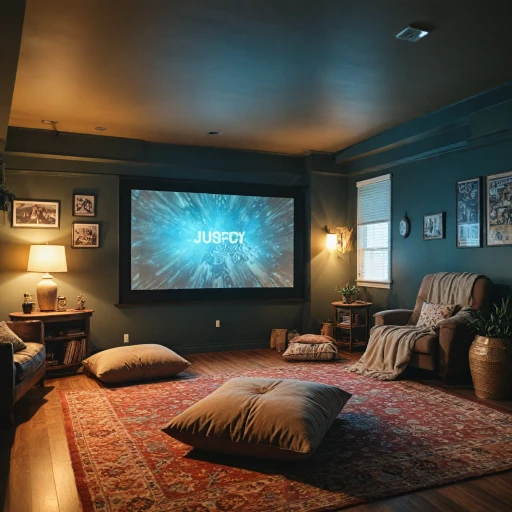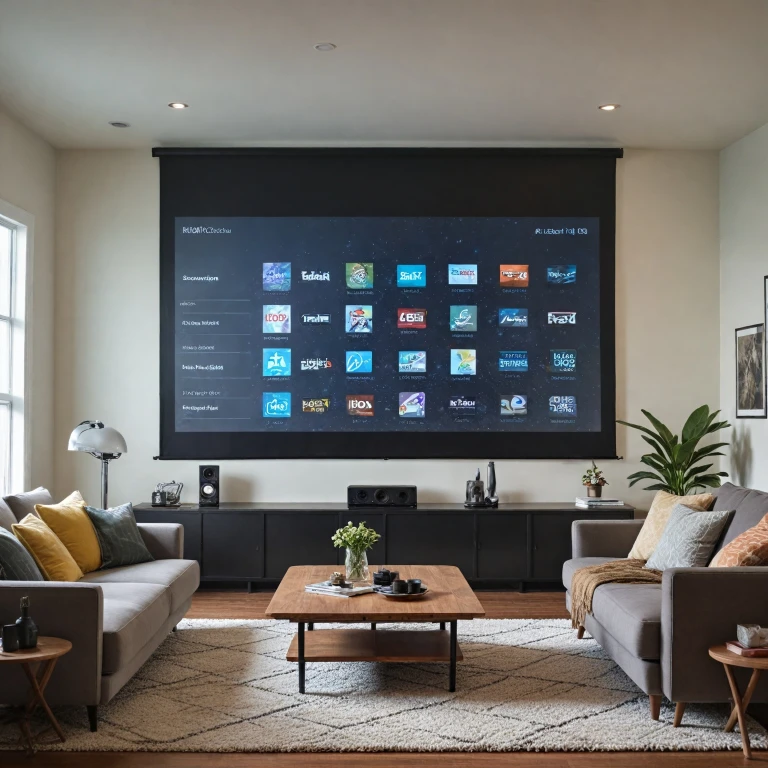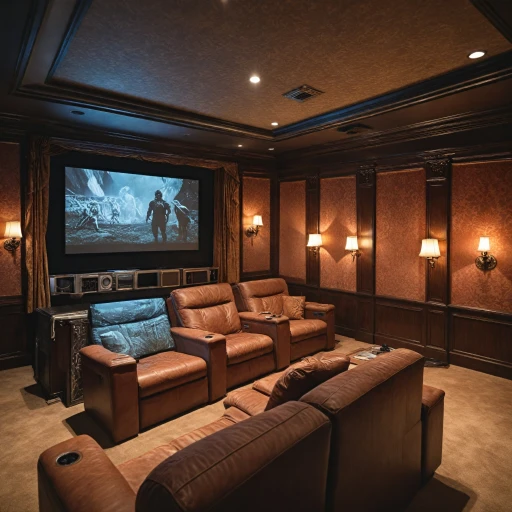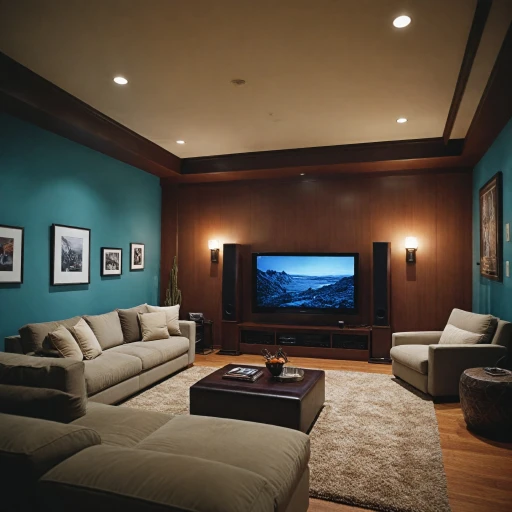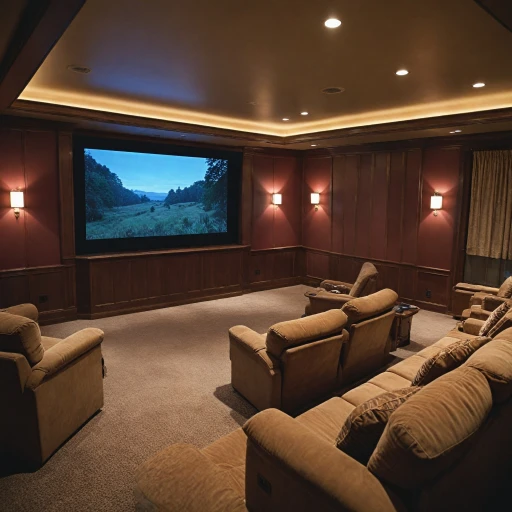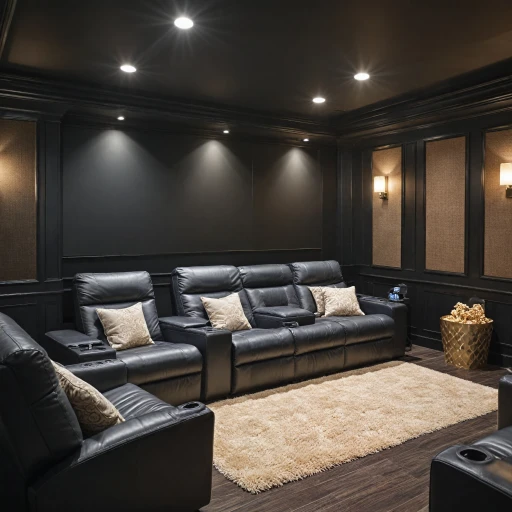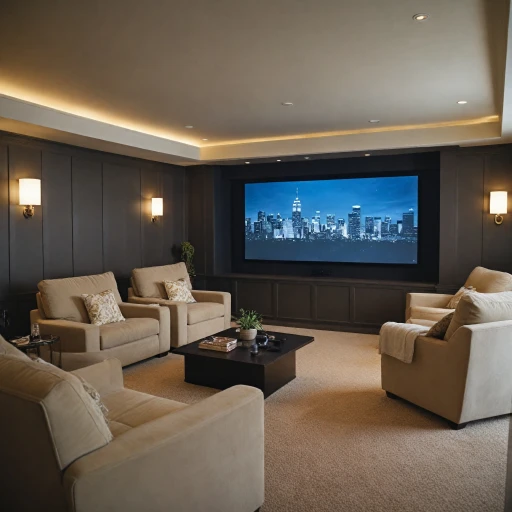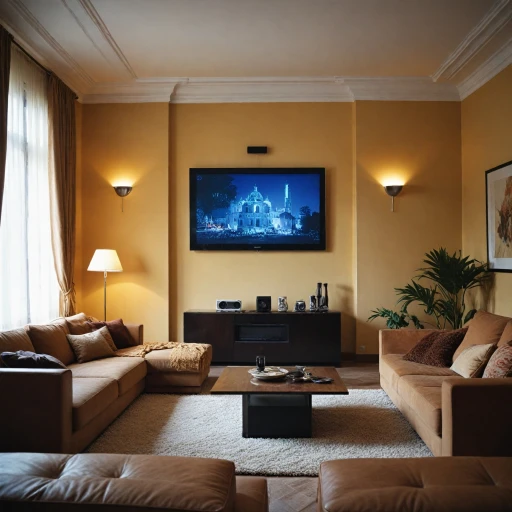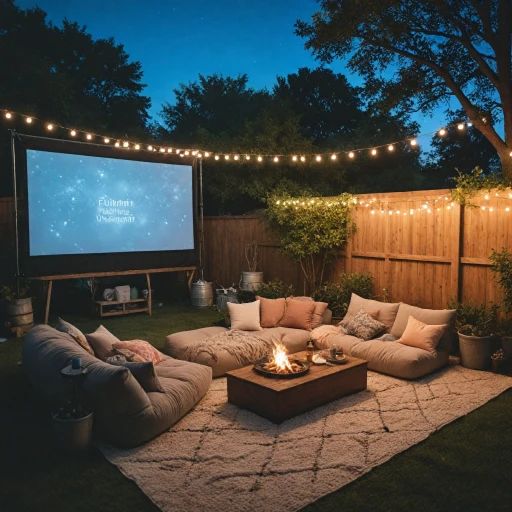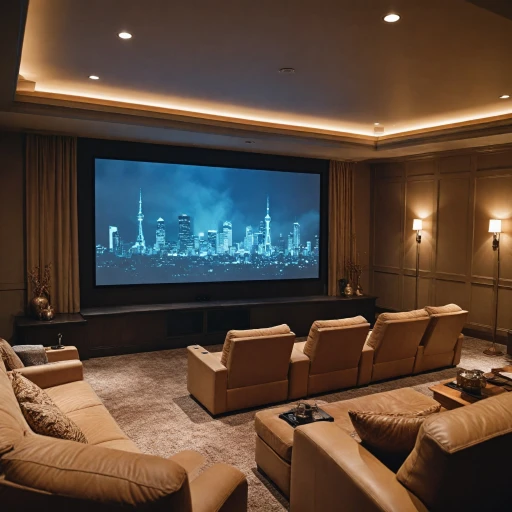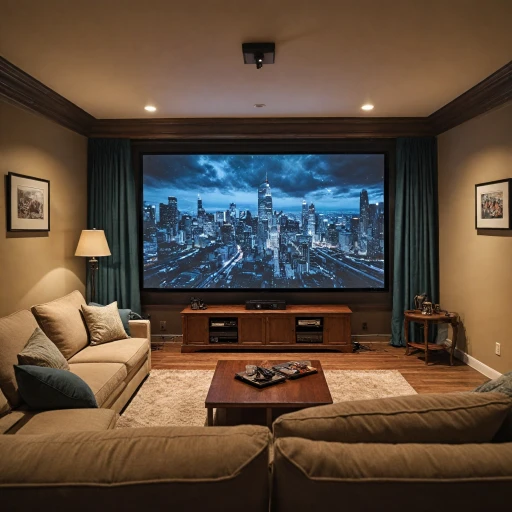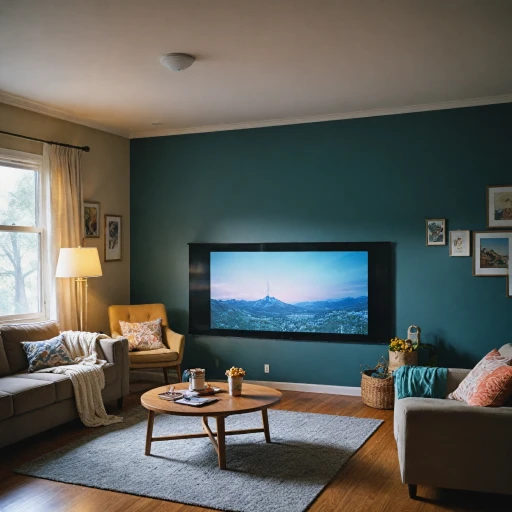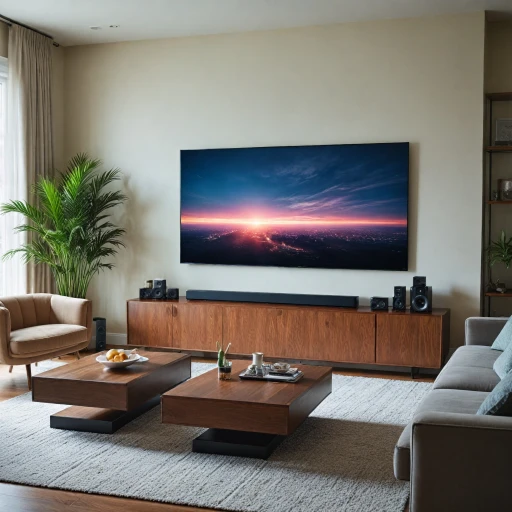The Importance of Screen Size in Home Theaters
Finding the Perfect Screen Size for Your Home Theater
When designing a home theater, one of the most pivotal decisions is selecting the right screen size. A projector screen that complements your room dimensions can profoundly enhance your viewing experience. Understanding the ideal screen size involves evaluating multiple aspects such as room size, projection type, and viewer comfort.
The screen size directly influences your viewing experience, impacting the image quality and overall theater aesthetic. While large screens offer an immersive viewing, they must match the projector's throw distance and the room's configuration to prevent issues like image distortion or viewer discomfort.
For optimal viewing, one must consider the viewing distance. The ideal viewing distance is typically between 1.5 and 2.5 times the screen diagonal. A properly calculated distance ensures that the screen doesn't strain the eyes, offering a comfortable and engaging cinema-like experience.
Screen height is another crucial factor. The top third of the screen should be parallel to the audience's eye level when seated, typically around one-third of the total screen height from the base. Depending on your projector and room setup, screens could be fixed frame, pull screens, or tab tension styles.
As new technologies emerge, projecting on screens that combat ambient light or using light rejecting screens can greatly enhance the viewing experience. Whether utilizing a short throw projector with an inch projector setup or considering ceiling-mounted projectors, the choice of screen size will need careful consideration to match the individual needs and projector specifications.
Standard Projector Screen Sizes and Their Uses
Exploring Commonly Available Screen Sizes
When it comes to selecting a projector screen for your home theater, understanding the standard sizes available can greatly influence your overall viewing experience. Unlike televisions, the screen size for projectors is typically measured by its diagonal, usually denoted in inches. This dimension determines the width and height of the screen, impacting image quality and aspect ratio.
Common screen sizes are tailored to accommodate a range of room sizes and projector types. For smaller spaces or setups with limited viewing distance, screens in the range of 80 to 100 inches diagonally can provide a more intimate theater feel. Larger rooms can accommodate screen sizes of 120 to 150 inches or even more, provided that the throw distance and projector capabilities align with these dimensions.
Adapting to Your Viewing Environment
When selecting a screen size, consider the throw projectors you intend to use. Short throw projectors work well with smaller screens and can be placed close to the screen without compromising image quality. Conversely, standard throw projectors may require a longer throw distance, often needing ceiling or wall mounts to achieve the optimal distance.
Tailoring Screen Sizes to Your Setup
It's also important to factor in the aspect ratio, as this dictates the relationship between the screen's width and height. The 16:9 ratio is a popular choice for home theaters, as it aligns well with most content types like movies and sports. Ensure your chosen screen size supports the relevant aspect for an optimal viewing experience.
If you are interested in enhancing your view with versatile screen options, you might explore the benefits of using a projector screen on a stand. This setup offers flexibility in adjusting screen height and distance, adapting to varying room configurations and personal preferences.
Aspect Ratios and Their Impact on Screen Dimensions
Understanding Aspect Ratios
When setting up a home theater, the aspect ratio of your projector screen plays a crucial role in enhancing the overall viewing experience. The aspect ratio is the proportional relationship between the width and height of the projection screen. Common aspect ratios include 4:3 seen in older televisions, 16:9 standard in most home theaters, and 2.35:1 typically used for cinema-like experiences.
A 16:9 aspect ratio is optimal for general home theater use as it matches the shape of most content today and strikes a balance between various types of media. On the other hand, if you're a film enthusiast seeking an immersive cinematic experience, a wider 2.35:1 screen might be preferable for replicating the theater experience.
Impact of Aspect Ratios on Screen Dimensions
The chosen aspect ratio will directly impact your screen size and the amount of ambient light that can affect picture quality. With a short throw projector, alignment can be crucial as variations in aspect ratios change the required viewing distance and can affect image curvature, leading to potential distortions if improperly aligned.
For instance, a 100 inch projector screen with a 16:9 aspect ratio will be approximately 87 inches in width and 49 inches in height, while a 2.35:1 screen of the same diagonal measurement will have different dimensions closer to 92 inches wide and 39 inches tall, impacting both the placement of your projector and throw distance.
Aspect Ratio and Viewing Distance
Another important consideration is the linkage between the aspect ratio and positioning, specifically in terms of viewing distance. You should identify a comfortable distance that allows for the full appreciation of image quality without sacrificing width or height. For comprehensive audio-visual harmony, selecting the right aspect ratio by understanding your room’s limitations and preferences paves the way toward achieving a superior viewing experience.
Do you want to further enhance your sound experience with compatible accessories?
Calculating the Ideal Screen Size for Your Space
Finding the Optimal Screen Dimensions for Your Space
Determining the ideal screen size for your home projector setup can significantly enhance the overall viewing experience. This process involves factoring in not only the dimensions of your room but also your seating arrangement and the type of projector you use.
First, consider the
viewing distance. The distance between the projector screen and your seating area is crucial. Too close, and the image may appear pixelated; too far, and you lose out on details. Generally, the recommended screen viewing distance is about 1.5 to 2.5 times the screen diagonal. For instance, if you have an 80-inch projector screen, your seating should be approximately 10 to 12 feet from the screen.
Aspect Ratios and Image Quality
The
aspect ratio of your projector is another vital consideration when selecting the right screen size. Common projectors are either 4:3 or 16:9 in aspect ratios. Matching the projector’s aspect ratio with that of the screen is crucial to prevent image distortion or unwanted cropping.
The relationship between screen size and ambient light levels also plays a role. In brighter rooms, opt for light rejecting or tab tension screens to preserve image quality. Short throw projectors are excellent choices when dealing with limited space or ambient light issues, as they can produce large images even with a minimal throw distance.
Additional Considerations: Room and Setup
The design and setup of your space can influence the optimal screen dimensions. Consider the ceiling height and the mounting method, be it a fixed frame or pull screens. A proper projection screen setup allows for flexibility in adjusting screen height, especially in rooms with high ceilings.
Fixed frame screens generally offer the best image quality due to their tensioned surfaces that minimize screen waviness. However, pull screens or screens on a stand might provide better flexibility, particularly if you seek a portable solution.
By calculating and aligning these elements, you can achieve an immersive theater experience tailored to your space, making your home projector setup a centerpiece of entertainment.
Material and Design Considerations for Projector Screens
Decoding Screen Material and Design for Optimal Viewing
In the realm of home theater setups, the choice of projector screen material and design plays a crucial role in determining the quality of the viewing experience. The material affects everything from image quality to ambient light rejection, making it essential to understand the differences in materials available for projection screens.
First and foremost, the type of material can greatly impact the image quality projected. A high-gain screen, for example, reflects more light back towards the audience, enhancing brightness, which is especially useful in rooms with some ambient light. However, high-gain screens can also create hot spots where the center of the image appears brighter than the edges.
For those dealing with ambient light, an ambient light rejecting (ALR) screen could be beneficial. These screens are designed to reject off-axis light, maintaining image contrast and visibility in brighter environments. In a dedicated theater room with controlled lighting, a matte white or gray screen might be more effective. It provides a more uniform reflection without altering aspect ratio perceptions.
Similarly, when considering screen design, one must be mindful of the intended setup. Fixed frame screens are a permanent fixture best suited for dedicated theater rooms. These provide a tensioned viewing surface that minimizes wrinkles and ensures consistent image alignment. Fixed frames typically offer superior image quality due to their sturdy construction and consistent viewing surface.
Conversely, retractable or pull screens offer flexibility and are ideal in multipurpose rooms. They can be motorized or manually operated, ensuring the screen size can adapt to various content and viewing needs. For those interested in this versatile option, tab tensioned screens are recommended. They maintain a flat projection surface by incorporating a tensioning system along the screen’s edges to prevent warping.
Additionally, short throw projectors have surged in popularity due to their ability to project large images from short throw distances. This influences the choice of screen material and design, as the screen must be capable of delivering clear images even when positioned close to the projector.
When selecting the screen size, height, and width, consider the viewing distance and room size to ensure the image’s clarity and comfort. A sit-at viewing distance often governed by the screen diagonal can optimize the watching experience. For instance, an 84-inch screen might require different considerations in terms of frame and ceiling height than an 120-inch projection screen.
Ultimately, understanding the nuances of screen materials and designs can dramatically enhance the performance of your projection setup, facilitating a truly immersive home theater ambiance.
Future Trends in Projector Screen Technology
Emerging Innovations in Projector Screen Technology
The evolution of home theater technology is rapidly transforming, and projector screens are no exception. As we examine the various
screen sizes and designs, it's crucial to note the advancing technologies that aim to elevate the overall
viewing experience.
One prominent trend is the development of
light rejecting screens. These are specifically designed to work in rooms with ambient light, enhancing image quality without the need for complete darkness. This opens up more flexibility in room design and supports different viewing experiences.
Moreover,
tab tension screens have gained popularity, providing a perfectly flat surface for projection, which is essential for ensuring high-definition images. This design innovation minimizes the common issues with screen waves and ensures consistent image clarity.
Additionally,
short throw projectors are on the rise, allowing projection of large images from a short
throw distance. These projectors require specially designed screens that cater to this type, maintaining image integrity even from limited projection distances.
The integration of additional smart features, such as automatic aspect ratio adjustment and motorized controls, also reflects the increasing convenience offered by future projector screen technologies. These features cater to the need for flexibility in
aspect ratio shifts and
screen size adjustments with just a touch of a button.
Finally, the exploration into new materials that enhance
contrast and reduce glare is ongoing. These materials impact the
projection screen design and influence aspects like thickness, texture, and color fidelity.
As advancements continue in the realm of projector screens, users can expect further improvements in both the functionality and aesthetics of their home theaters, ensuring an immersive and optimized viewing environment.
